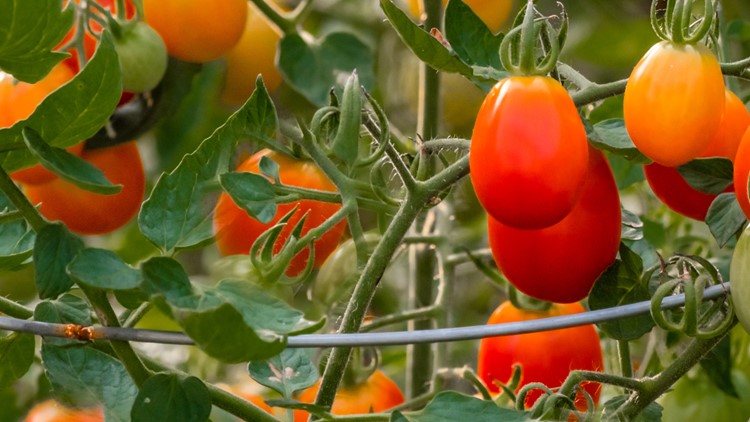PENNSYLVANIA, USA — As temperatures continue to rise across the state and country, here are some quick tips on how to protect your garden from extreme heat.
Water... often
It may sound obvious, but it's also the most effective. Experts say that the best time to water is early in the morning before the full force of the sun hits plants.
Watering later in the day during high temperatures poses a higher risk to plants. The water could evaporate before it reaches the roots of the plant, causing the leaves to burn. The evening is another recommended time to get out and water before temperatures rise again the next day.
However, resist the urge to overwater plants. In high temperatures, leaves may wilt, but that doesn't necessarily mean that they need more water. If you're unsure, check the moisture content of your soil. This can be done by probing an inch to two inches below the soil surface. If it still feels moist, the plant probably doesn't need any more water.
Avoiding watering plant leaves
On hot, sunny days it's recommended that plant-lovers avoid overhead watering. Moisture tends to amplify the sun like a magnifying glass. Lingering water droplets on plant leaves in direct sunlight can increase the chance of sunburn or scorched leaves on plants.
The best practice when watering is to focus on the base and soil surrounding the plant, so that the water can properly reach the roots.
Provide shade
Plants may need sunlight, but, just like us, they also need shade when it's hot outside. Shade is a very effective tool when keeping plants cool. By reducing the impact of the sun on plants, soil tends to stay cooler, keep its moisture, and reduces the impact of excessive heat. Shade also prevents sun scalding, which easily affects peppers and tomatoes.
A variety of household objects can be used to provide shade. Draping bed sheets or specialized shade cloths over stakes or other support devices will help cool plants. Beach umbrellas and large shade canopies can be used too, to protect an entire garden instead of a specific plant. For longer heatwaves where plants will need extended periods of shade, it's best to use shade material that allows some light through.
For portable plants, an easy option is to move them to shadier areas, such as underneath patios.
Add mulch
Mulch acts as an additional layer of protection for the soil and roots of plants. Mulching also helps buffer against extreme temperatures and promotes more controlled soil temperatures.
Gardners recommend applying about two inches of mulch material on the soil surface, around the base of plants, or over the whole garden. For lighter mulch, like straw, a heavier application is recommended. Organic mulch can include wood chips, shredded leaves, pine needles, aged compost, or straw. Some even use newspaper, cardboard, or plastic sheeting as mulch. A full guide to mulching can be found here.
Avoid mowing the lawn
Cutting the grass too short in hot temperatures can cause root exposure to the sun, increase moisture loss and sun damage and cause plants to lose the shade that taller grass blades provide.
Keeping your lawn at three inches adds additional shade to the grass.
Change out or seal terracotta pots
While great for indoor use, terracotta pots are not ideal for outdoor use, especially in a heatwave. If not sealed, the material allows for quick evaporation, which causes plants to dry out much faster. Terracotta sealant improves this issue.
Consider changing out store-bought plastic containers that plants usually come in. They act similar to terracotta by absorbing more water than the plant. The best option when repotting plants is to choose light-colored containers which reflect sunlight.



